August 1 - November 6
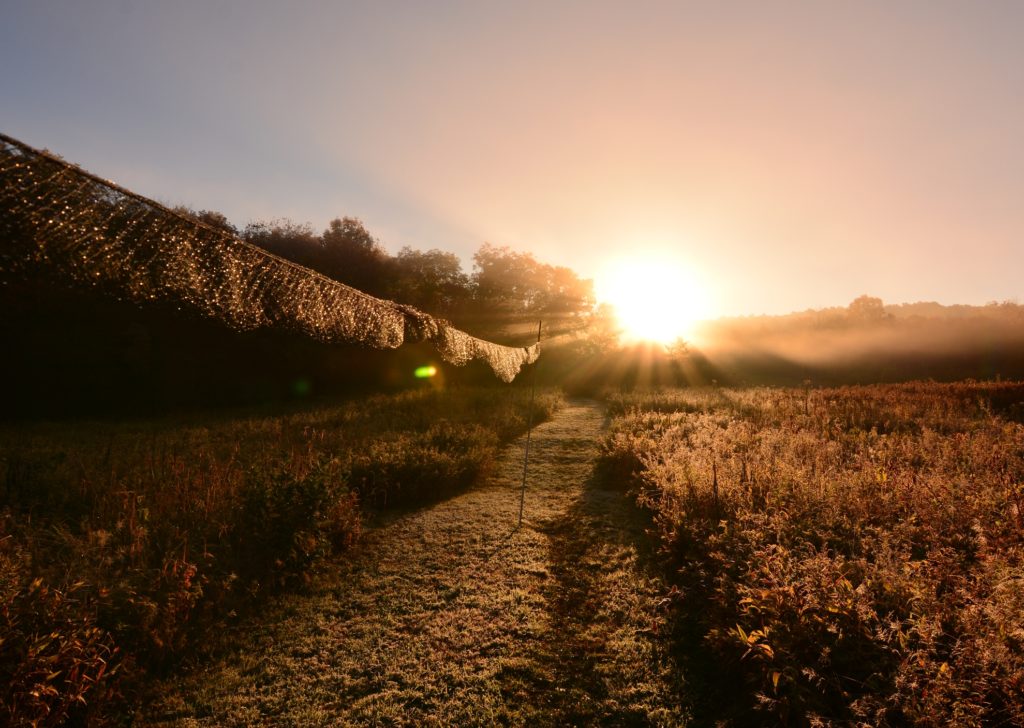
This Fall we banded 6,597 birds across 105 species. We processed another 2,746 recaps, bringing our season total to 9,343 captures. Our top 10 species for this season made up over half of all new birds banded (53%): Swainson’s Thrush (593); Ruby-crowned Kinglet (499); Yellow-rumped (Myrtle) Warbler (408); American Goldfinch (396); Magnolia Warbler (309); Gray Catbird (300); Ruby-throated Hummingbird (290); Red-eyed Vireo (240); Common Yellowthroat (230); Cedar Waxwing (220).
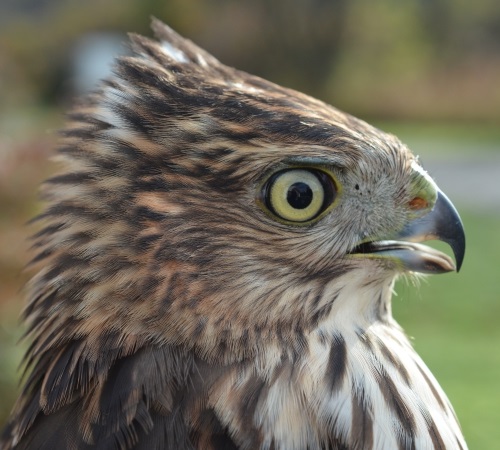
Unusual captures this season included this Cooper’s Hawk banded on November 2nd. This was just the 11th Cooper’s Hawk banded at our station since 1951, the last having been captured in July of 2007.
He did his best to look fierce in every sense of the word. Like other birds, hawks can raise their head feathers for intimidation or to impress. And no, we weren't intimidated, but we were definitely impressed!
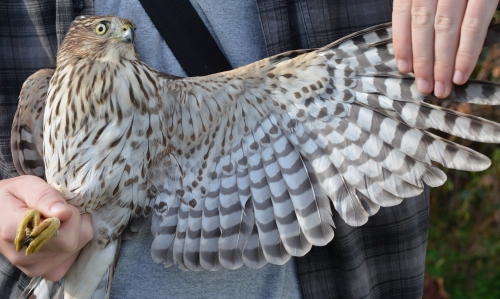
In case you're wondering, The Sibley Guide to Birds lists the wing span of the Cooper's Hawk at 31”.
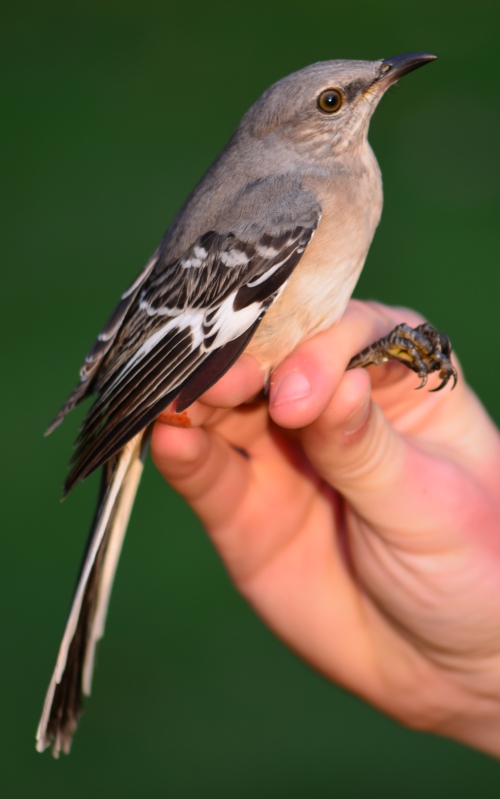
This Northern Mockingbird,, banded October 16, is only the 14th we've ever caught and the first in almost 9 years (last capture 12/12/2007). Though common to the west and south, we see relatively few here in the Laurel Highlands. If we have milder winters and their populations continue to expand, Northern Mockingbirds may become a more common capture for us.
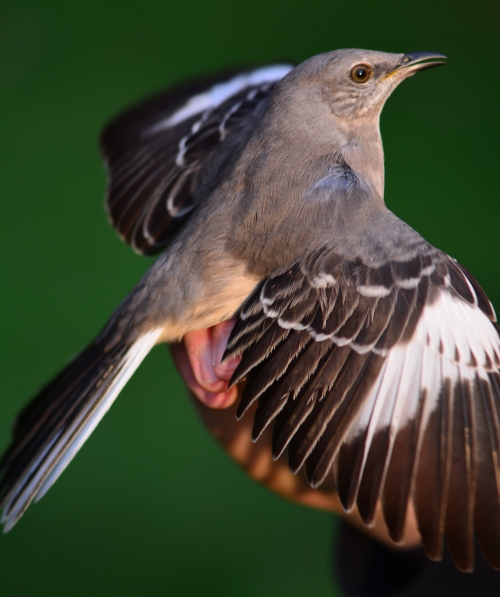
Another shot of the Northern Mockingbird showing the distinct patch of white on the wings. This is a good field marking for this species and is easily observed while the bird is in flight.
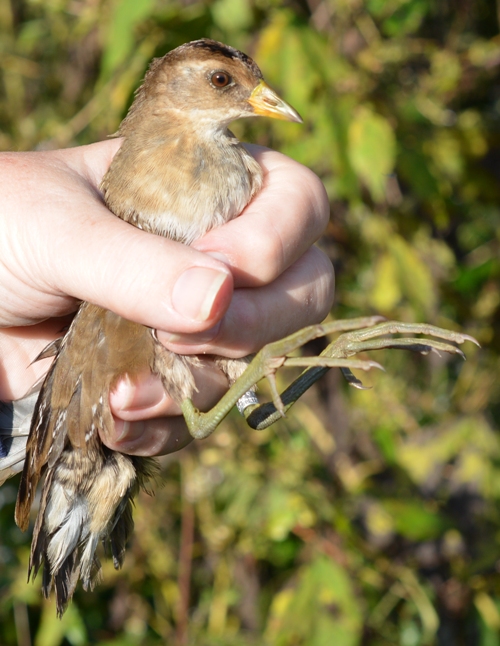
This immature Sora, banded on September 28th, was certainly a nice surprise in the net. This was the fifth year in a row that we have had the privilege of banding one of these secretive wading birds.
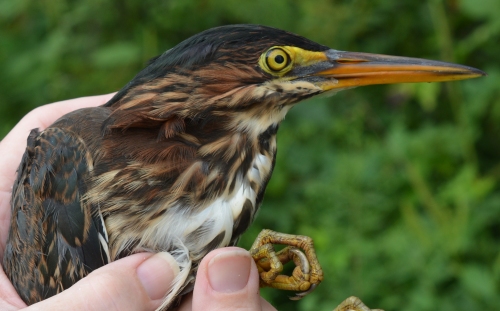
And speaking of wading birds, no one at the lab was complaining about the opportunity to get a close-up look at this immature Green Heron on August 18.
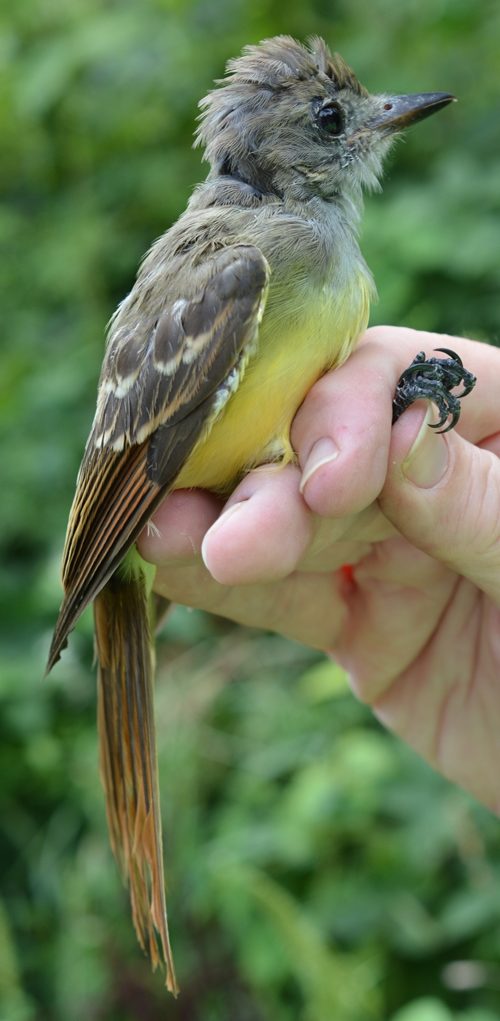
Two flycatchers that we also see about once a year showed up this Fall— this hatch-year Great-crested Flycatcher, banded on August 22…
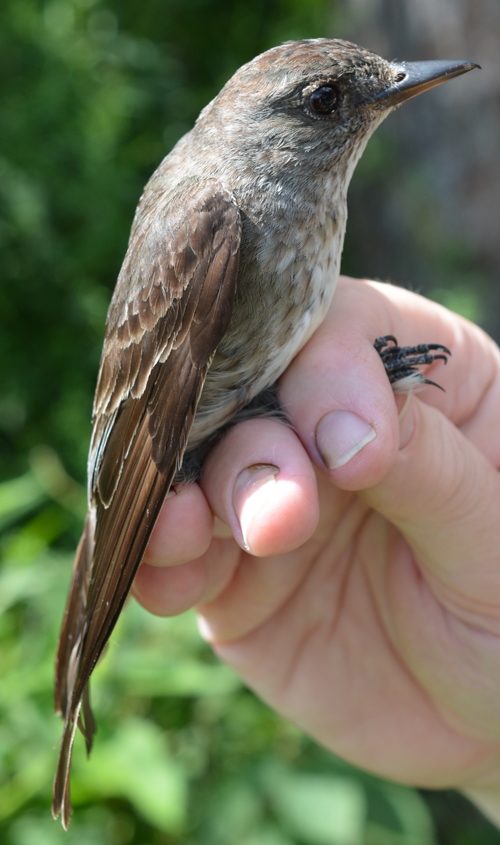
...And this adult Olive-sided Flycatcher from August 18th.
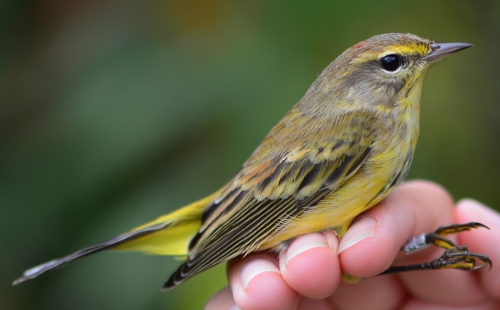
We banded three Yellow Palm Warblers this season, all of them in the month of October [7, 19 (pictured, adult) and 25].
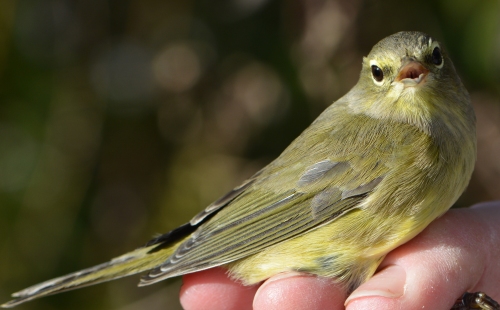
We also banded three Orange-crowned Warblers that same month; two of them we were able to recapture. The first (pictured, an adult) was banded on October 11th and recaught on the 13th and the 18th. The second was banded on October 18 and recaught on the 19th and the last showed up in our nets on October 23rd. The latter two were both hatch-year birds.
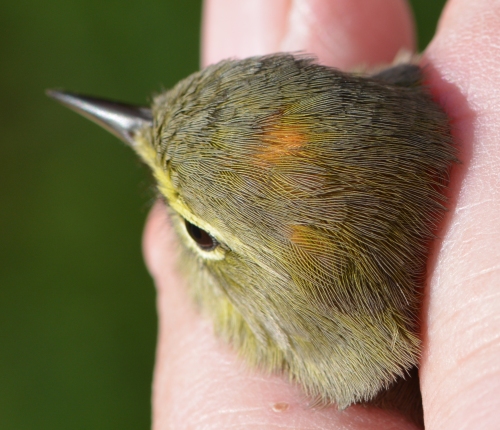
Since the Orange-crowned warbler we photographed was an adult, the orange in the crown was quite extensive, as seen here.

Our one and only Yellow-breasted Chat, a hatch-year male, was banded on October 9th.
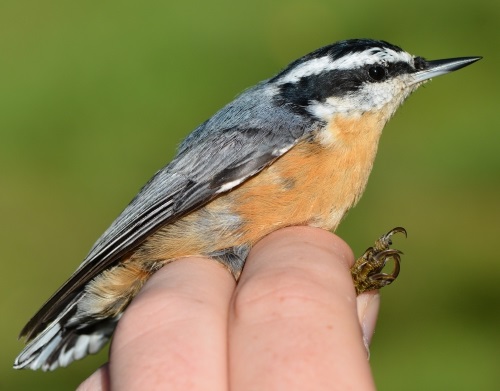
Banded on September 15, this was our first Red-breasted Nuthatch since January 25, 2013. Red-breasted Nuthatches are a relatively rare catch for us except during "irruptive" years when northern seed eaters (finches, crossbills, grosbeaks and nuthatches) move farther south in search of food. In the fall/winter of 2012-13, we banded four Red-breasted Nuthatches. Two of those hung around the lab for a time— one individual was banded October 8 and recaught six more times, the last on November 6th; the second, banded December 4 was recaught five times that month. Sadly, we only saw this year’s hatch-year male on this one occasion.
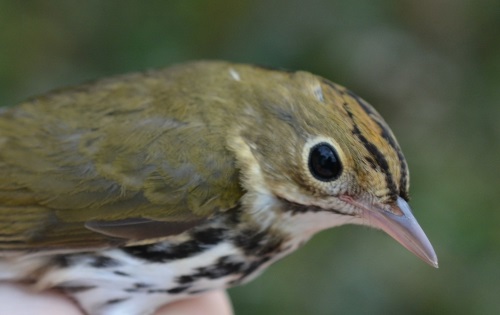
While not an uncommon capture for us, we did see a lot more ovenbirds. Our long-term (Fall) average for this species is 60; this Fall we banded more than twice that, 137! Other species that showed up in good numbers were Blue Jays (34; Fall mean= 13) and Swainson’s Thrushes (593, also more than twice our Fall average of 222).
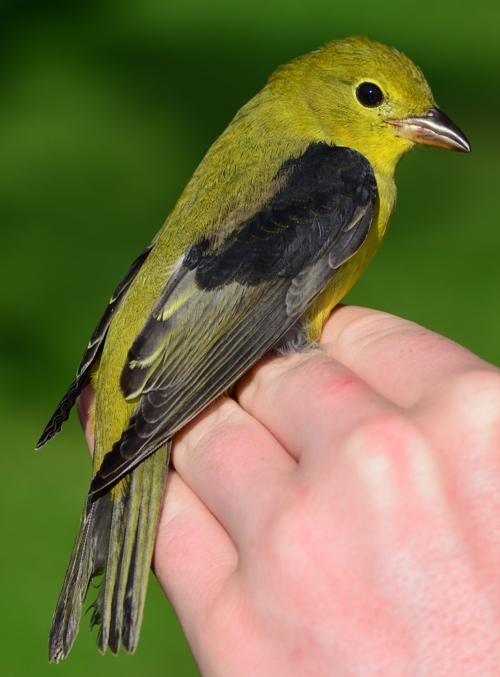
In a year in which we had the warmest month on record (July 2016) and an unseasonably warm early-October, we banded several late migrants, including this young male Scarlet Tananger from October 16. This individual was the latest we've had in 37 years and tied for the second-latest we've ever caught (other late captures include 10/16/1979 and 10/26/1998).
Another late capture this season was a Black-and-White Warbler (10/23). We've only ever caught 14 Black-and-Whites in October, the latest being caught on October 10th, 2000. This year’s hatch-year male was nearly two weeks later!
Did you know that Scarlet Tanangers aren't scarlet in the fall? This male will grow his namesake red feathers over the winter (which he will spend in northern South America).
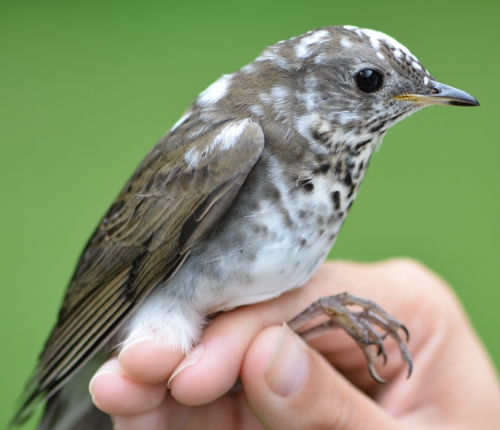
This hatch-year Gray-cheeked Thrush wasn't unusual because of its timing, but because of plumage. This bird had leucisim, a genetic condition where an individual isn't able to incorporate melanin or carotenoids into some of its tissues, resulting in white, pale or patchy coloration. Gray-cheek thrushes are normally a beautiful olive-gray above with a plain face with some light streaks and no eyering. We banded 71 Gray-checked Thrushes this Fall, considerably more than our long-term Fall average of 40.
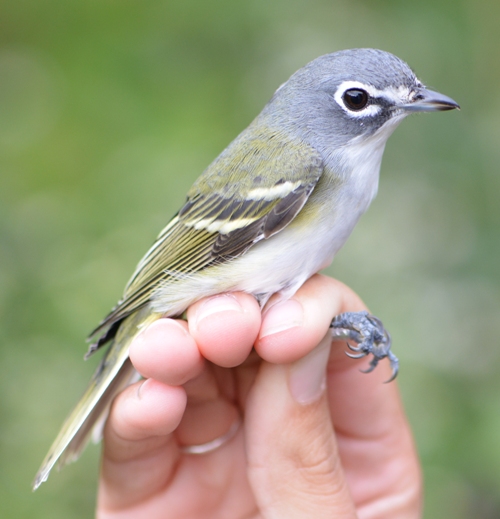
In addition to the 240 Red-eyed Vireos that made our top-ten list, we had several other vireo species represented. We banded 35 Blue-headed Vireos (pictured, hatch-year, banded on October 2nd).
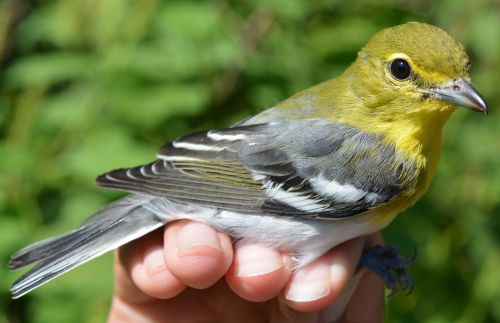
The Yellow-throated Vireo is a much less common capture for us. We banded only two this season— an adult on August 24 (pictured) and a hatch-year individual on September 2. Also represented in our Fall totals were the Philadelphia Vireo (we banded 20) and Warbling Vireo (4).
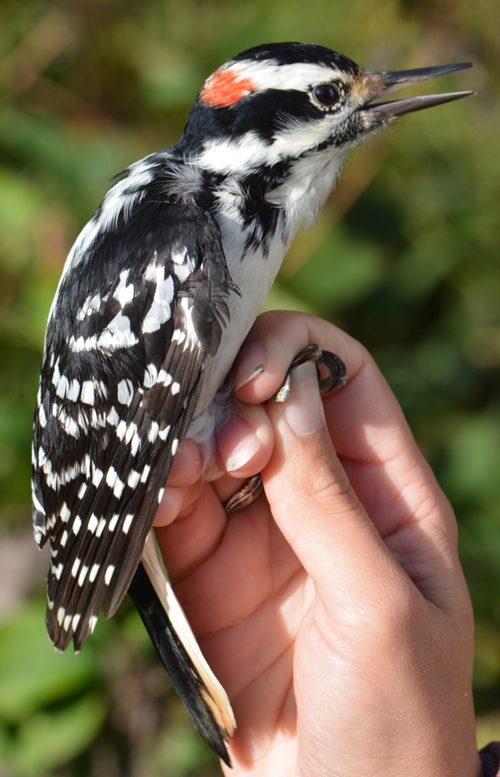
We banded just one Hairy Woodpecker this Fall, this hatch-year male on August 11th.
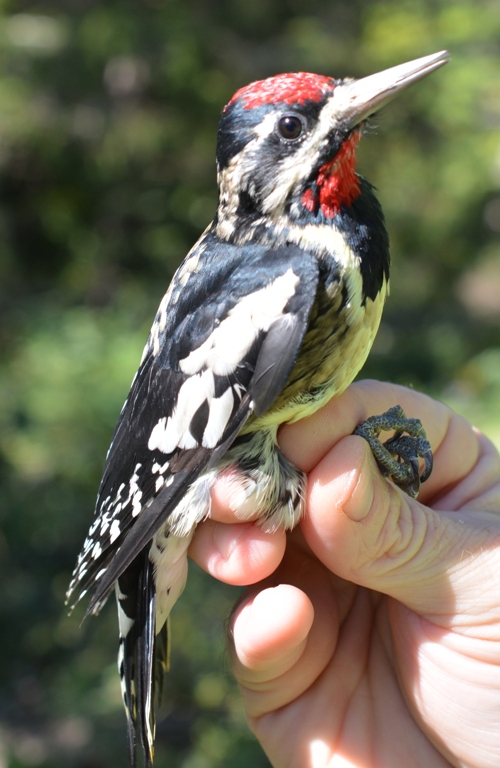
This hatch-year male Yellow-bellied Sapsucker from October 11 was one of two that showed up in our nets this Fall— the other was a second-year male from September 27.
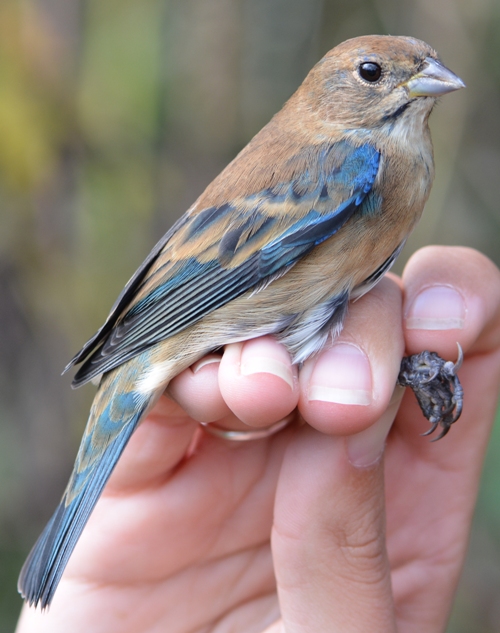
Banded October 1st, this adult male Indigo Bunting still looks pretty handsome even though he is in his “basic” (non-breeding) plumage. Body feathers and wing coverts will be replaced over the winter/early Spring so that he is restored to that beautiful blue we love before the breeding season.
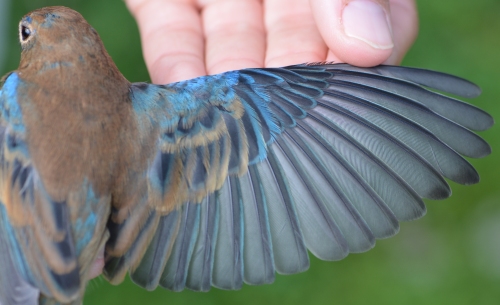
The outstretched wing of the Indigo Bunting. Note how fresh and colorful the newly-molted feathers are. The nice blue edging on the primary coverts and the bright blue on the “shoulder” patch indicate the adult status of this individual.
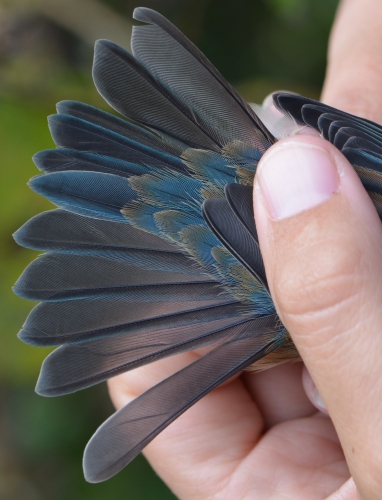
Rounded tail feathers (retrices) and colorful uppertail coverts also point to adult for the age.
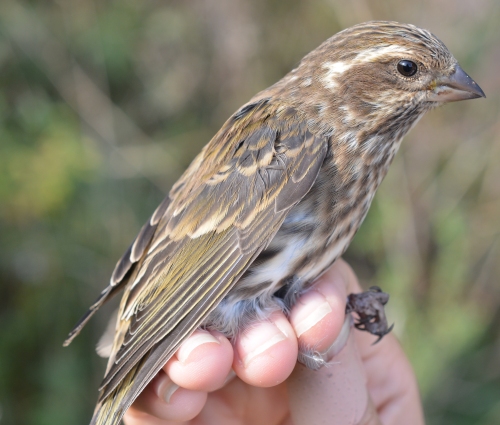
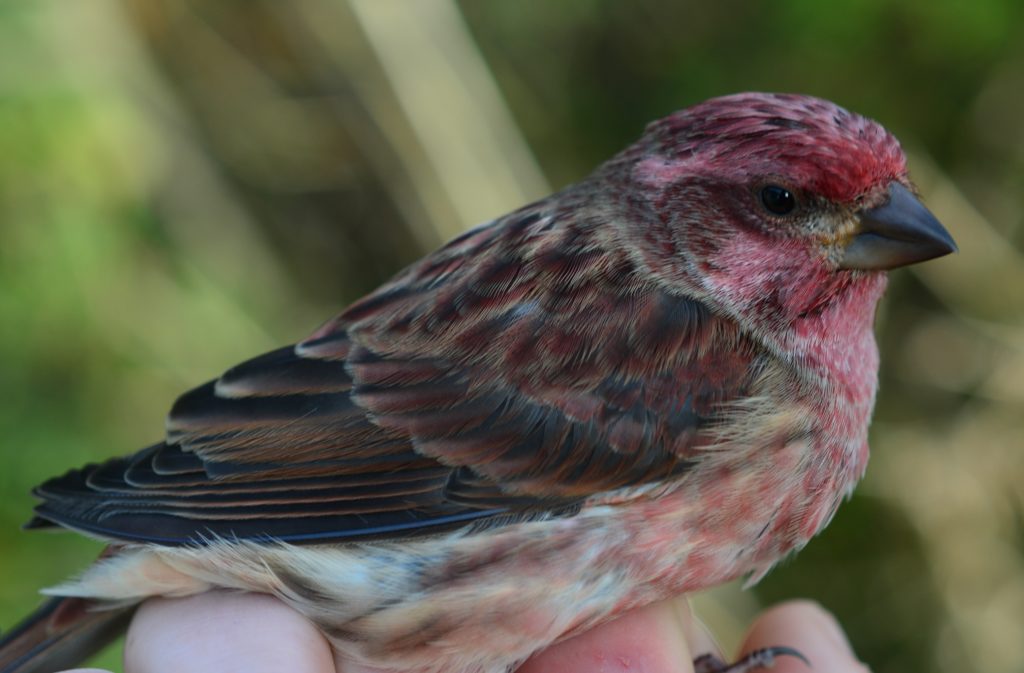
We were able to capture pictures of both female and male adult Purple Finches this season. The female (less colorful) was banded on October 30 and the male on October 29. These were two of 99 Purple Finches banded.
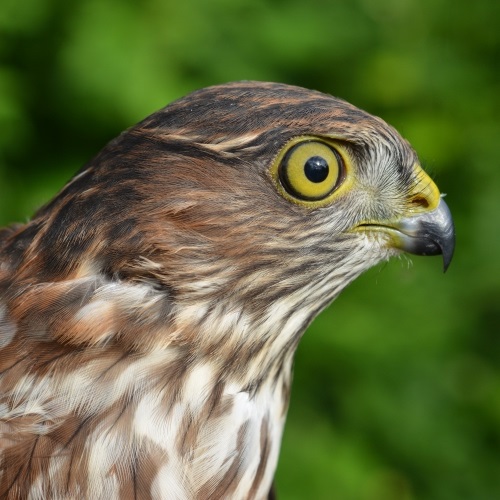
This was our first Sharp-shinned Hawk (hatch-year male), banded in our first week of Fall banding (August 5th). Our luck would continue throughout the season; we banded a total of five (our long-term Fall average is two), our last on October 25.

Smaller than the Cooper’s Hawk at the top of this post (23” wing span vs 31” for the Cooper’s), the Sharp-shinned Hawks are more likely to get caught in our nets. We banded three males and two females, all hatch-year except the last capture in October, which was an adult female.
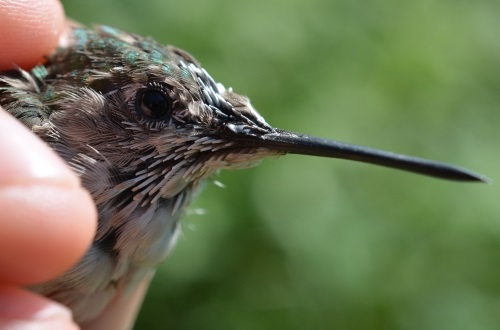
We banded 290 Ruby-throated Hummingbirds this Fall, exactly double our long-term average of 145! Since hummingbirds are one of our earliest migrants, this banding was concentrated across just 37 banding days until September 24, when we banded our last for the year. Our busiest day for hummingbirds was September 6th, when we captured 23.
At the start of Fall, many birds are still in the process of molting (replacing) all or most of their feathers. Look closely at the head of this adult female hummingbird and you can see these new feathers, which first appear as tiny white straw-like sheaths.
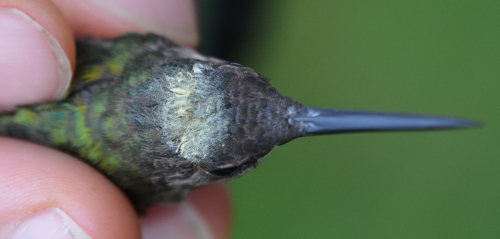
Compare the previous photo to this adult female banded almost three weeks earlier (August 6th). This individual has no feathers in molt, but that white patch on her head gives us a clue about her activities— while gathering nectar she has been fulfilling a dual role as a pollinator!

All in all, it was a busy, productive Fall. On November 4th, we banded our 10,000th bird for the year! Appropriately, it was a species that we would typically expect at that point in the year-- a Cedar Waxwing (adult female) and our #1 species for the day (she was one of 35 waxwings banded this day, and our 715th waxwing for the year). I bet she had no idea when she left her perch that morning that she would be a celebrity! Pictured with our unknowing celeb is our Fall crew, minus our fearless leader, Luke DeGroote (who was, unfortunately, absent from the festivities); L-R: Nick Glover, Katie Barnes, Mary Shidel and Mallory Sarver.
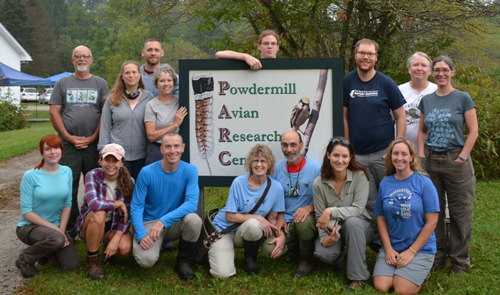
In addition to daily banding activities, we held an Advanced Banding Workshop in the middle of September. Participants from across the country spend time at the lab and in lectures learning how to age and sex birds. Pictured here are our seven workshop participants along with the Fall banding crew, our Banding Coordinator, Luke DeGroote (standing, to the right of sign) and our Banding Workshop Coordinator, Annie Crary (kneeling, far right).
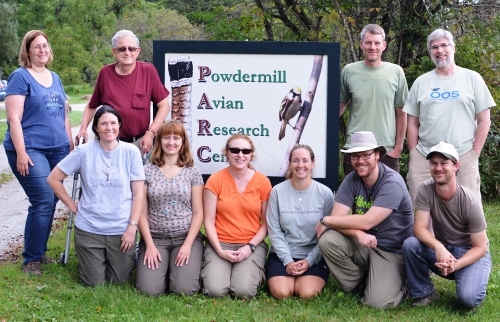
Additionally, we hosted a North American Banding Council (NABC) certification session attended by 10 candidates and evaluated by 10 trainers with over 200 years of combined banding experience! The session drew candidates and trainers from 13 states and was one of the largest held in the eastern US. Altogether, one candidate was certified at the trainer level, three candidates at the bander level, and five candidates at the assistant level. Pictured are our trainers Robert Leberman, Robert S. Mulvihill, Luke DeGroote, Annie Lindsay Crary, Adrienne Jo Leppold, Molly McDermott (not pictured), Maren Gimpel, Dan Small, Andrea Patterson, Emily Patterson, and NABC's newest addition: Erik Johnson of Audubon Louisiana and Louisiana Bird Observatory!

A departing shot of our seasonal crew walking back to their cabin after the last day of Fall banding. We will miss them, and all of the birds that have left us as well. Many thanks to our crew, and a special shout out to our ever-faithful volunteers [Andrea, Freya, Gigi, John (both of you!), Kristin, Nick, Phil, Rose and Zara]. We couldn’t have done it without you all!
